Get the episode transcript here.
As with most things, there’s no one right way to do inclusive marketing. However it is helpful to apply inclusive marketing best practices to be more effective at attracting and retaining a bigger and more diverse customer base.
These best practices are really ways of thinking, to help you approach inclusive marketing the right way for your brand. Incorporate these best practices into the way you operate to make a big impact with your inclusive marketing efforts now and into the future.
Reduce Friction
The customer experiences brands deliver are often rampant with friction. When you look at those experiences through the lens of consumers who are part of underrepresented and underserved communities, then that friction is magnified significantly.
Friction is a force between two surfaces that prevents those surfaces from sliding or slipping. It is a force that is always acting to slow things down.
Friction comes in many forms.
We want friction to do it’s thing when we press on the brakes on our cars or our bikes. But in business, of course when you’re working to move your ideal customers farther along in their journey with you, friction is not what you want.
As a consumer, I’ve been frustrated on way too many occasions as a result of friction in the experiences I’ve had with brands.
For instance, I experience friction when I go to a restaurant, and it isn’t clearly marked what is and isn’t safe for me as a gluten-free person to eat.
As a result, that means if I do decide to go eat there with a menu with nothing marked like the one below, I have to ask a lot of questions of the server to make sure I know what my options are.

What’s the fix for this? Work to eliminate as much friction as possible for the people you serve.
Examples of brands eliminating friction in the customer experience for specific identities
For example, this restaurant has already done all the work for its customers who are gluten-free. They created a specific menu highlighting which items are safe for them to eat, AND included that menu in the navigation so it is easy to find on their website.
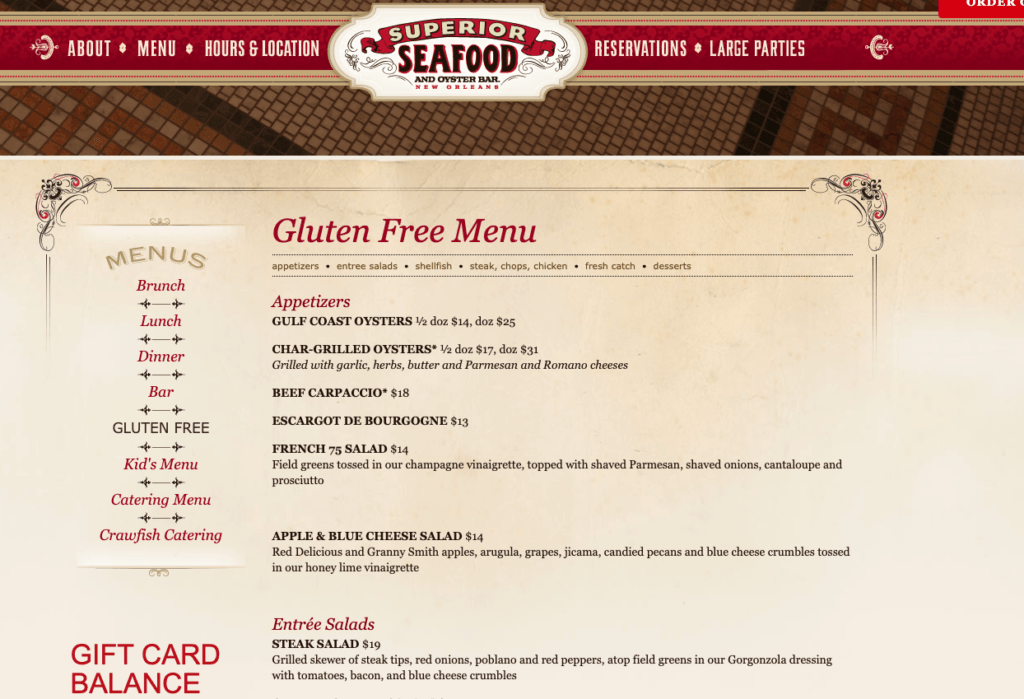
The information gluten-free customers need is readily available, and they don’t have to ask questions of the server about what items are safe for them to eat if they don’t want to.
When we’re watching a series or a movie in my household, we’re almost always watching it in two languages. Generally, the audio is in English for me and the subtitles are in Spanish for my husband Jonathan. Most of the streaming services we use have taken the friction out of the process for us. That’s because when they publish a show or a movie, it’s already uploaded with the audio and subtitles available in multiple languages.
How do you create customer experiences with the least amount of friction as possible?
Think about your end customer.
Consider all the ways in which the people who have the problem your brand solves could be different. Then design your products, services, and experiences in such a way that it removes that friction.
Walmart recently removed friction for people with sensory processing disorder. They did this by implementing sensory friendly hours from 8am-10am everyday in all stores across the U.S. and Puerto Rico. Sensory processing disorder is common among people with autism, ADHD, dyslexia, and post-traumatic stress disorder.
During these hours, the televisions on the walls showcase a static image. The radio is turned off, and the lights are dimmed.
Transparency
Consumers from underrepresented and underserved communities already have a certain degree of mistrust and skepticism for brands that have long ignored them. When those same brands and suddenly decide to start marketing to them, they don’t just run to them with open arms.
They’ve seen far too many brands engage in performative marketing, and “say” how important the community is to them and that they are committed to them. They’ve also seen those same brands not following up on those claims with real and tangible action.
So what’s a brand to do?
Acknowledge your past and or current situation
This is needed especially if the way you’ve operated in the past is in conflict with your values and beliefs, and goals today.
Transparency about where you stand now is key. This is paramount if your current situation doesn’t reflect the state you’d like to get to. This one for me is especially important when I think about the makeup of teams.
It is important that you have a team that reflects the communities that you want to reach. If you don’t have a representative team today, don’t hide that. Tell us. Also tell us what your plans and goals are to remedy that, so we know you’re working on it. Keeping us updated on your progress helps us hold you accountable.
Here’s how Salesforce is keeping us updated on their progress toward their representation goals.
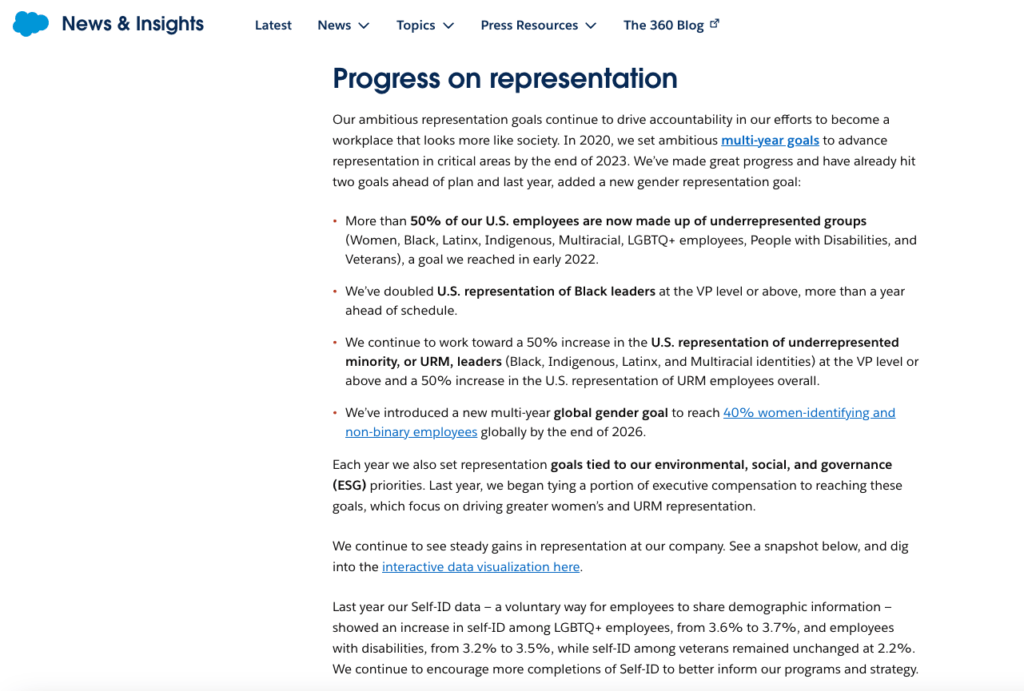
Lean into transparency about your marketing practices
For instance, if you’re going to donate a portion of your proceeds to a charity that supports the community you want to serve, be clear and up front about how much you’re donating. There’s a big difference between donating 5% of proceeds and donating 50%.
Ralph Lauren touts that they are supporting Indigenous and tribal communities by donating a percentage of the proceeds of their groundbreaking collaboration with Naiomi Glasses. That support goes to Change Labs, a Native-led nonprofit organization supporting people within the community building small businesses.
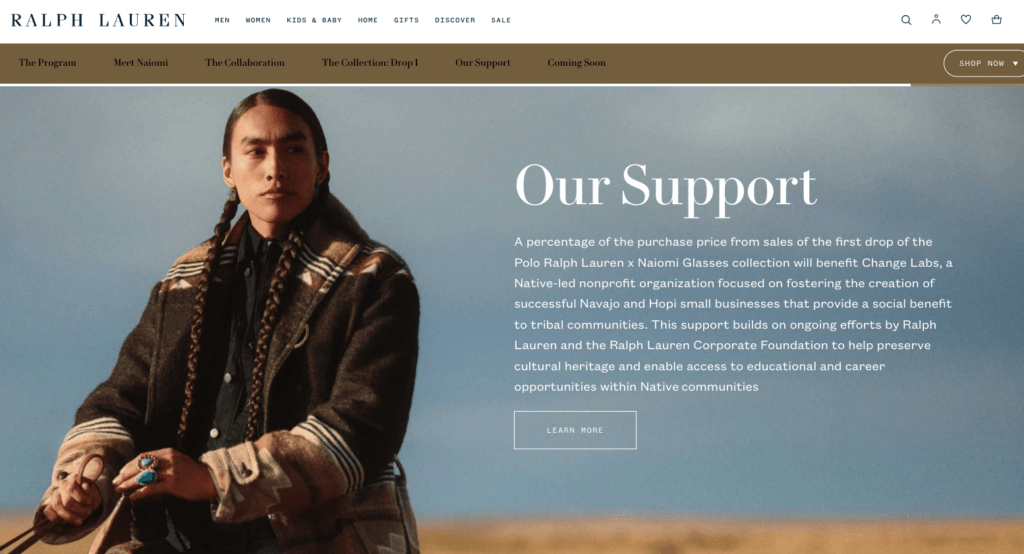
But you have to do some digging to find out what the actual percentage is. I finally found that information on the product pages of the collection, under the “details” section. That brand is donating 5 percent of proceeds of the first collection, which actually isn’t very much percentage wise.

From an inclusive marketing best practice standpoint, consider 15 percent to be the minimum you should donate if you’re going to take this approach. This is especially important if you’re also going to promote the donations as a benefit of how you’re supporting a community.
Harry’s, the shave brand, has donated 100% of proceeds for a special edition version of their Pride Shave Kits, to the Trevor Project. The organization provides LGBTQ+ youth access to mental health resources. On their website, Harry’s is clear that for every $30 kit purchased, the brand will donate $5 to The Trevor Project. That amounts to 16.7 percent.
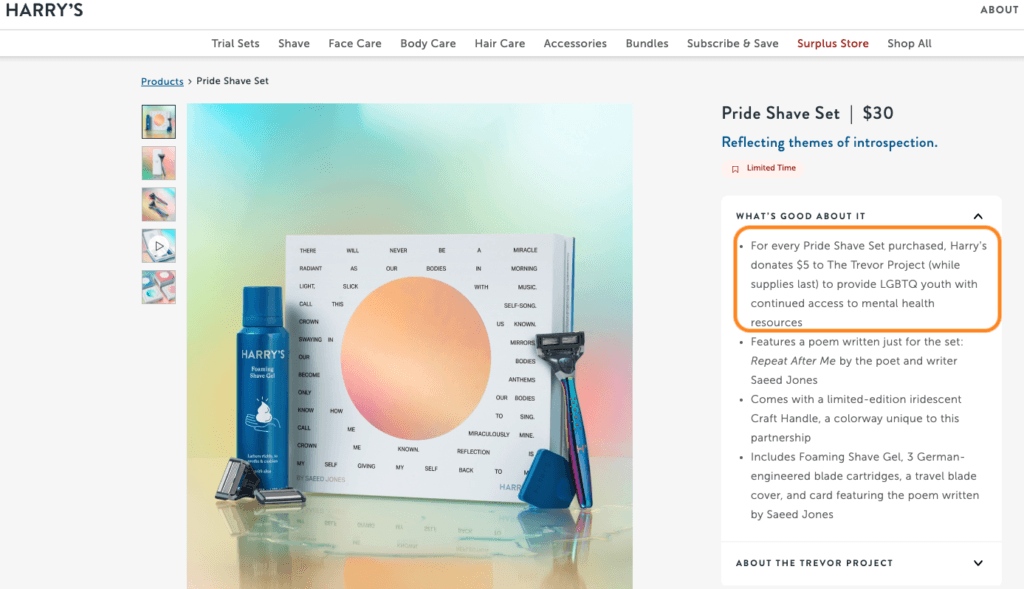
Be transparent about your values
71% of consumers want to know buy from brands that align with their values. And its often hard to know what your values are or what it is you stand for, if you don’t actually show us.
Make it clear. Put it on your website. Talk about it in your socials. And then back those words up with actions that make it clear that you live your values on a consistent basis.
Ben & Jerry’s is very transparent about their values on their website. They include an “activism” tab in the main navigation, and when you hover over, one of the pages you can select is all about their progressive values.
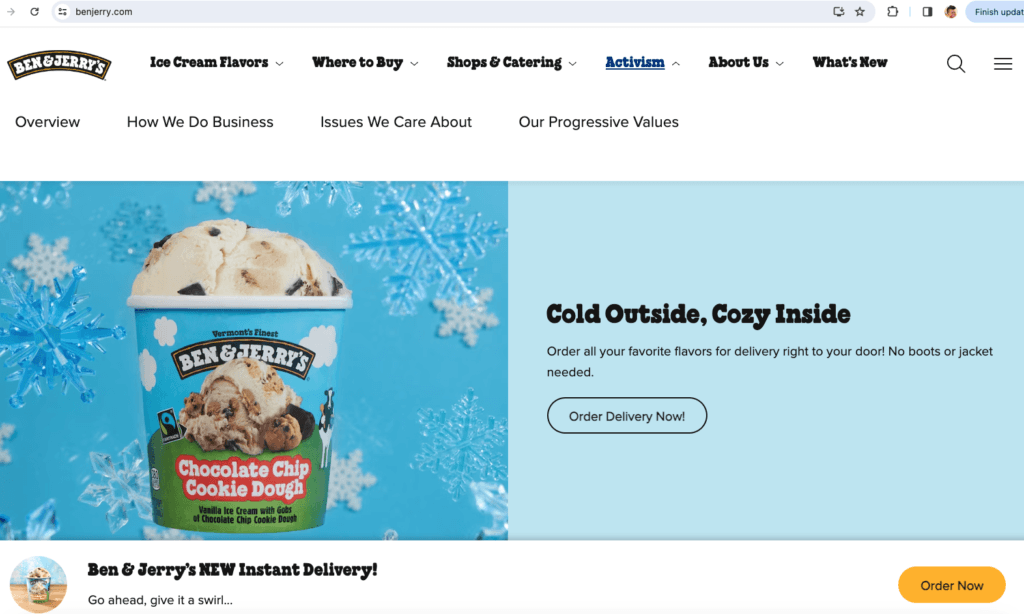
Here’s how one consumer with several identities from underrepresented and underserved communities responded to seeing the values for Ben & Jerry’s front and center on their website.
Technology
It’s easier now than it ever has to be inclusive. Technology is a big reason for that.
These days there are tons tools, apps, and products at our disposal that make it easier for us to serve people from underrepresented and underserved communities.
There’s an abundance of tools available to caption videos for you to make them more accessible. There’s also a lot of tools to create transcripts of your video and audio content, to make it more accessible as well.
I’ve started checking into technology that helps you translate your content into different languages. Disclaimer: that content would always be checked by an actual human for accuracy).
There are tools to ensure your websites are equipped to support multiple languages.
There is so much technology out there to help you be more inclusive. And quite frankly, more of your customers are gonna start giving you the side eye if you aren’t using them.
There’s even AI technology that is even more culturally relevant with its database of inputs. These are designed to give you different perspectives, support, and outputs to help you better serve the needs of different types of consumers.
Lets lean into the ease and support that technology can bring in supporting you with applying inclusive marketing best practices. This will make you both more efficient and effective as you work to better serve more people who have the problem your brand solves.
Connection
Inclusive marketing has always been about connection.
It’s been about collaborating. Co-creating. Building, strengthening, and nurturing relationships.
I’d even go so far as to say that you cannot be effective with inclusive marketing at all without building genuine relationships with the people who are a part of that community.
Connection means having people who are parts of the communities you want to serve in your circle of influence. Those include people you’re learning from, spending time with, and talking to. It also includes those who entertain and inspire you.
Having people on your core and/or extended team who are part of the communities you want to reach fuels connection.
Co-creating with people who are part of the communities you want to serve fuels connection. Focusing on connection also ensures the products, services, and experiences you deliver are designed to serve those communities.
Connection also means getting a constant feedback loop from people who are part of the communities you want to serve. This ensures the products, services, and experiences you’re delivering evolve and grow with their needs – and has the least amount of friction as possible.
Tapping into the wants, needs, and desires of the people you serve, fosters deep connection as well. Being in relationship with others means you care about people, not just as it relates to what they buy from you. It means you care about their overall wellbeing, and the people they care about, which often extends to their community as well.
The more you connect with the communities you want to serve —- the more successful your inclusive marketing efforts will be.
Investment in inclusive marketing
And the last area to focus your energy and attention on for inclusive marketing success, is investment.
Investment can take on a number of different forms — it doesn’t always have to mean financial.
But anything that you want to give you a return on — you have to invest in it.
Whether it is in technology. Team. Training. Research. Investment in being in the room with the communities you want to reach and build relationships with. For you it might be investing in consulting and learning how to do things better.
It could be investing in diversity-owned media, investing in getting the personnel you need to go custom photoshoots, getting new more inclusive photography, overhauling your website to make it more accessible, hiring partners, collaborators, influencers who already have relationships with the communities you want to serve.
That investment can look like upgrading and your internal systems, processes, and resources to enable you to operate more inclusively.
Investing could mean partnering with organizations that support the communities you want to serve on issues that are important to them.
There are many ways to Invest. To be clear, you can get started being inclusive today with $0 financial investment.
But there’s no finish line with building an inclusive brand. There’s no finish line with serving a community.
You may start your inclusive brand journey with $0 financial investment. But as you go deeper in serving a broader base of customers who are growing more diverse, that will change. There will be some financial investment required.
But why wouldn’t there be?
You’re going to get business results from it. Both your sales and your customer base will increase. As such, it is unreasonable to expect that there won’t be any financial investment associated with that happening.
It’s time to incorporate these inclusive marketing best practices into your brand
That’s my blueprint for you for inclusive marketing success in 2024. And the beauty of it is, doing these things will lead to your success no matter what year it is. And it also works with any customer group.
What I’ve laid out for you here is really just about how to be successful with your marketing in 2024. That’s the goal, because inclusive marketing, is really just…good marketing.
Articles mentioned in the podcast episode
4 Inclusive marketing trends that will impact your brand
Embrace these 5 inclusive marketing principles to win more customers
5 consumer expectations of brands engaging in inclusive marketing



